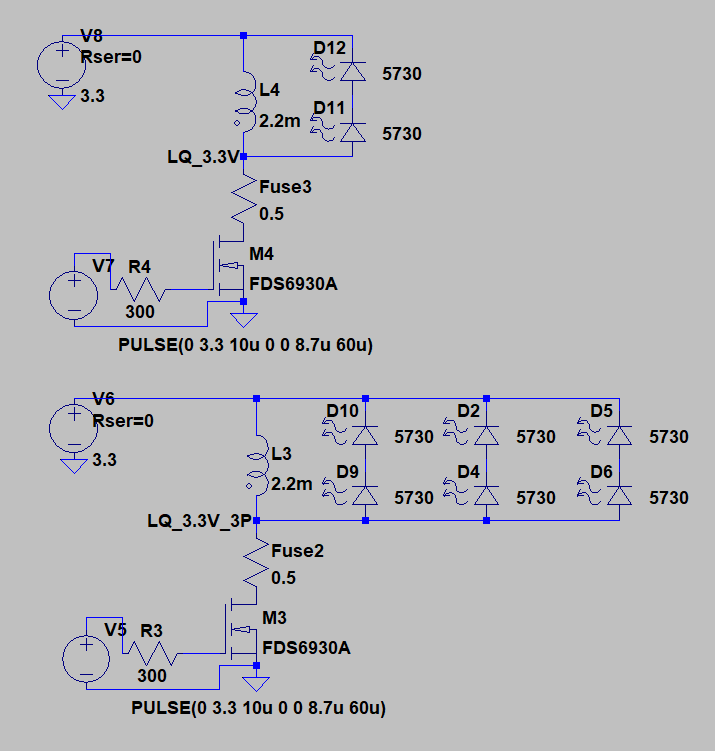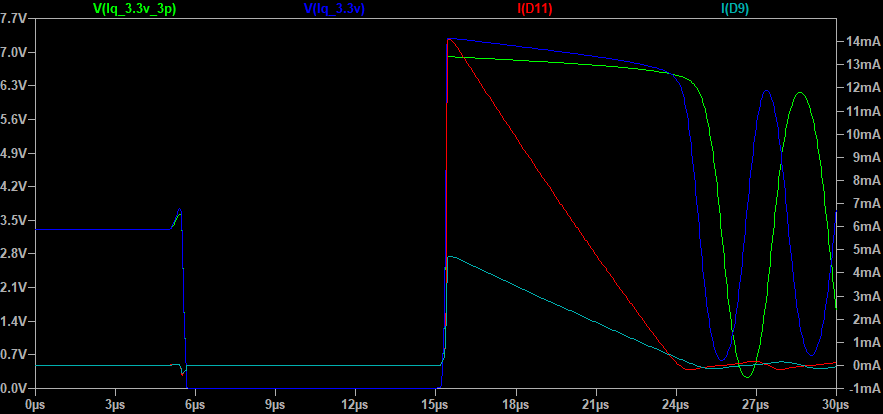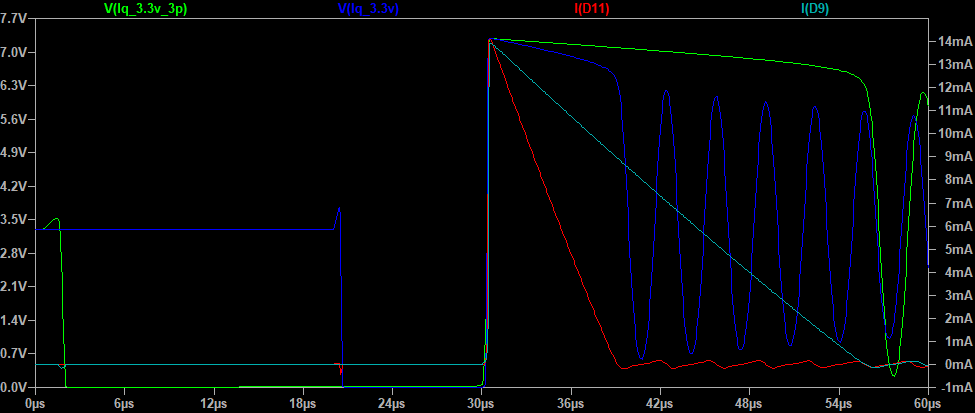In the last log, we created the pulses to generate the most efficient peak sawtooth pulse currents to drive the LEDs and compared the brightness of the most efficient LEDs to the existing Beta model of the #Yapolamp which is driven by an anomaly (go see what I mean) and it's LEDs get hot and are a different colour tone to the efficiently driven ones...
In concluding that we needed to go brighter with the efficiently driven LEDs, we created higher peak sawtooth currents by pulsing the same 2.2mH inductor for longer (pulsing means opening the MOSFET and letting current begin to build between VCC and GND, which builds the magnetic field in the inductor). Checking back to the efficiency curves, we seem to be losing 9% of our Lux/mA (or Arbs) if we drive at 20mA peak sawtooth current. There was a noticeable increase in brightness but they still weren't as bright as the Beta.
Which brings us to the latest test: will efficiently driven LEDs produce sufficient light in a bank of 6 to meet the aim:
1) A torch for the user to find their way around a dark room or for limited reading under a duvet.
?
So with an array of 6 LEDs in a 2 Series, 3 Parallel (2S 3P) arrangement, we need to go back to Spice. The 2S 1P circuit we used previously is on the top and the 2S 3P is below:

Here, we can see the effect of the same pulse applied to both circuits:

Note that the current going through the 2S 3P is approximately 1/3 of the 14 mA peak in the 2S 1P (as expected with Kirchoff's law). Both discharges start and end roughly the same time. To get the 2S 3P arrangement operating at 14mA peak sawtooth current, we need to pulse the MOSFET much longer, about 3x longer (everything's looking nicely linear at this point). In this plot, we're pulsing the 2S 3P circuit for 25.5us and I have delayed the start of the 2S 1P pulse so that the discharge curves are superimposed:

See how the 2S 3P (turquoise) discharge period is about 3x longer than the 2S 1P (red), making our whole cycle duration about 57us. This means that the fastest pulse-discharge frequency is 1/0.000057 = 17.5kHz. This is in the upper range of audible sounds, so we could have a problem with the device whining in use. If we shrink the inductance, we can reduce the pulse length required to generate our peak currents and also commensurately this will reduce the discharge time across the LEDs for a cycle. For example comparing two 2S 3P LED circuits below, one with the original 2.2mH inductor and one with a 1mH inductor, we can see they can both be pulsed and achieve 14mA peak sawtooth discharge:
This time the turquoise trace is the LED attached to the 1mH inductor and the green trace is attached to the 2.2mH inductor. We can read from the traces that a total pulse-discharge cycle for a 1mH inductor takes about 27us, which isn't an exact division by a factor of 2.2 but is close enough. The resulting frequency for a 27us cycle is 1/0.000027 = 37kHz, which is sufficiently above audible spectrum that I'd be happy with this.
For now, until I buy a 1mH inductor (good, there are plenty to choose from in this size) I can use the 2.2mH to test brightness of the 2S 3P arrangement
 Simon Merrett
Simon Merrett
Discussions
Become a Hackaday.io Member
Create an account to leave a comment. Already have an account? Log In.